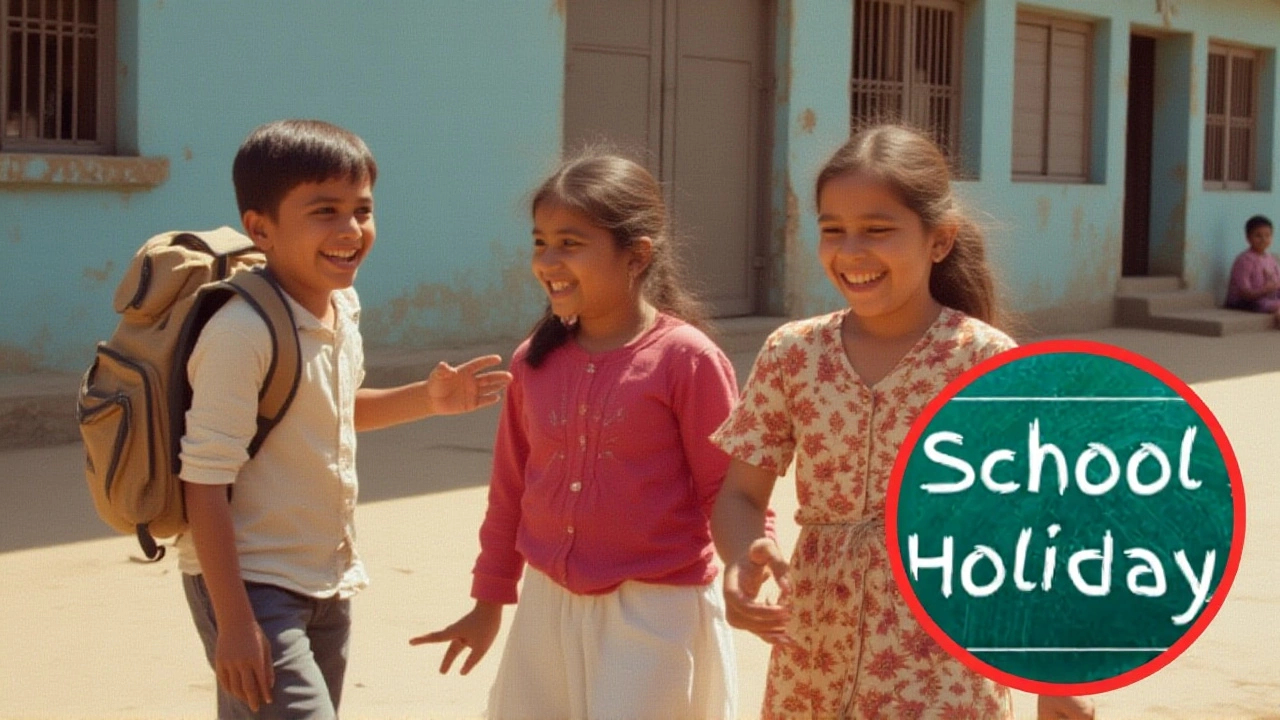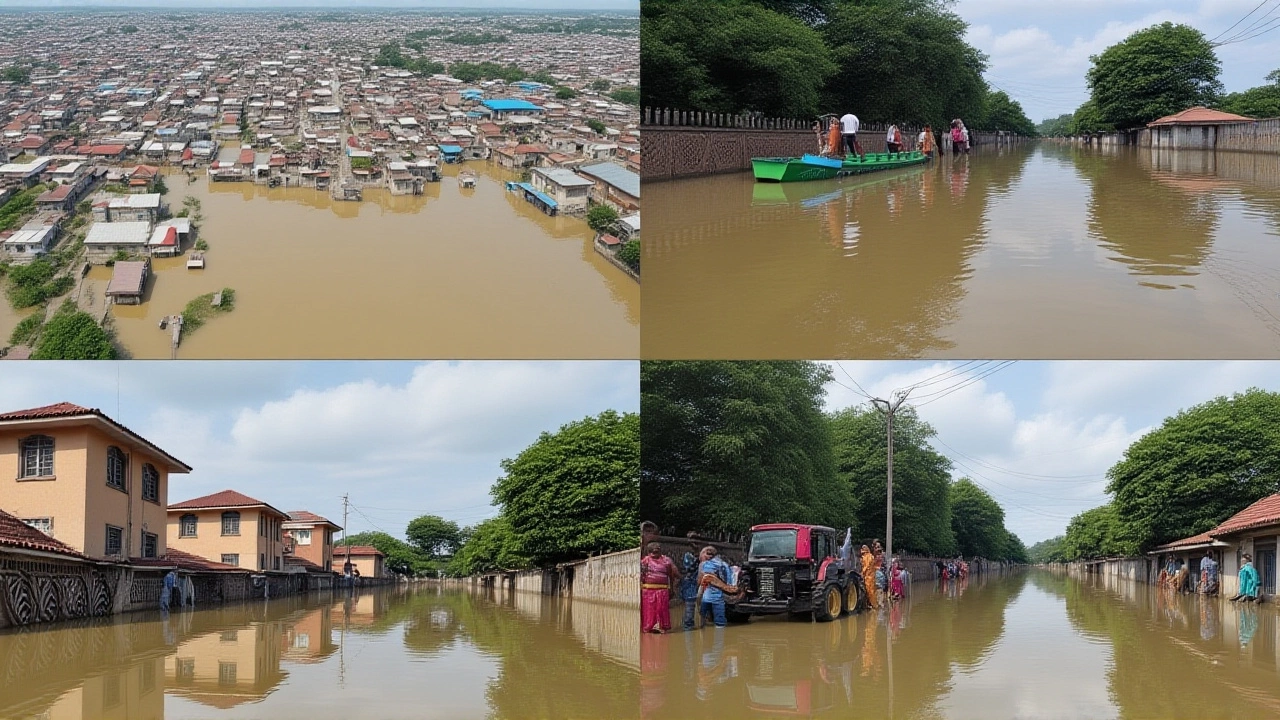Chhattisgarh Releases 2025‑26 School Holiday Calendar: 64 Days Off

When Bhupesh Baghel, Chief Minister of Chhattisgarh signed off on the new school timetable, the entire state felt a ripple of anticipation. The School Education Department of the Government of Chhattisgarh released the official 2025‑26 School Holiday CalendarChhattisgarh on 14 January 2025, laying out a total of 64 days of school closures for the upcoming session. Here’s the thing: the schedule isn’t just a list of dates – it shapes the rhythm of learning for roughly 5.2 million students and the 190 000 teachers who serve more than 72 000 schools across the state’s 33 districts.
Key Dates and Breaks
Below is a quick snapshot of the major windows:
- Autumn Break: 27 September – 6 October 2025 (10 days)
- Dussehra & Gandhi Jayanti: 29 September – 4 October 2025, with Vijayadashami and Mahatma Gandhi Jayanti coinciding on 2 October
- Diwali Festivities: 20 – 25 October 2025, a six‑day stretch that includes Dhantrayodashi (gazetted), Diwali Amavasya, Govardhan Puja and Bhaidooj
- Summer Vacation: 2 May – 20 June 2025 (50 days)
- Winter Break: 23 December 2025 – 1 January 2026 (10 days)
Other notable holidays – Maha Shivaratri (26 Feb), Holi (14 Mar), Eid‑ul‑Fitr (31 Mar), Chhath Puja (27 Oct), Guru Nanak Jayanti (5 Nov), and Christmas (25 Dec) – are also listed. The calendar flags three discretionary days that school principals can allocate for local events like Annual Day or Sports Day.
How Schools Will Implement the Calendar
The Department’s circular stresses that academic sessions must resume on the first working day after each break. If a holiday falls on a weekend, schools follow the usual government practice of shifting observance to the nearest weekday. Unforeseen holidays – say, a sudden festival date change due to moon‑sighting – will be compensated with extra class days, ensuring the mandated 201 teaching days are met.
Here’s the twist: school offices remain operational throughout vacations, meaning administrative staff continue to process paperwork, pay slips, and admission queries. This dual‑track approach keeps the bureaucracy humming while classrooms pause.
Impact on Students, Teachers and Parents
For students, the six‑day Diwali break is a double‑edged sword. On one hand, it gives families a solid block for celebrations and travel, especially in rural districts where relatives gather far and wide. On the other, teachers must compress curriculum coverage into fewer days before the break, a challenge that many schools address by front‑loading lessons or assigning supplementary worksheets.
Teachers, according to a statement from Dr. Gaurav Kumar, Education Minister, welcome the longer summer vacation because it allows for professional development workshops that often get squeezed into the regular term. However, the winter break – falling right before the end‑of‑year exams – means extra grading time, which many educators see as a necessary trade‑off.
Parents, especially those in the capital Raipur, have expressed relief that the calendar aligns major public holidays with school closures. “It saves us a trip to the office every time the government declares a holiday,” said Sunita Patel, a mother of two in the Raipur suburb of Tetrapur. Still, some parents of working‑class families worry about childcare costs during the longer breaks, a concern the Department acknowledged in its FAQ.

Reactions from Educational Stakeholders
The teachers’ union, Chhattisgarh Shikshak Sangh, issued a brief note applauding the clarity of the schedule but urged the government to consider a longer winter break for regions that experience harsh monsoons. Meanwhile, the Association of Private Schools welcomed the uniformity, noting that private institutions like DAV Public School in Bhatgaon often diverge from the state calendar – a fact that sometimes confuses parents.
Local district officers are tasked with fine‑tuning the discretionary days. In Surajpur district, the Deputy Collector, Mr. Rajesh Sharma, said the district will earmark one of the three days for a community health camp, turning a school break into a public‑service opportunity.
Looking Ahead: Future Scheduling and Policy Implications
Education analysts see this calendar as a stepping stone toward a more data‑driven academic year. By tracking attendance patterns across the 64 holiday days, the Department hopes to identify gaps in learning and schedule remedial sessions where needed. The move could eventually feed into a statewide “learning loss” dashboard, a tool that other Indian states are beginning to explore.
In the longer term, officials are already eyeing a shift to a “four‑term” model, which would redistribute the 64 days into smaller, more frequent breaks. The idea is to reduce student fatigue and give teachers regular intervals for planning, but it will require legislative tweaks – a conversation slated for the next state assembly session.

Key Facts at a Glance
- Total holidays: 64 days for the 2025‑26 session
- Summer vacation: 50 days (May 2 – June 20 2025)
- Number of schools affected: > 72 000
- Students impacted: ≈ 5.2 million
- Teaching days guaranteed: 201
Frequently Asked Questions
How does the new calendar affect summer vacation length?
The 2025‑26 schedule sets summer vacation from 2 May to 20 June, a continuous 50‑day break. This is consistent with the previous year’s length, allowing families to plan trips and schools to conduct teacher‑training programs during the lull.
What happens if a holiday date shifts because of moon‑sighting?
The calendar notes that holidays based on the almanac, like Eid‑ul‑Fitr, may be rescheduled. Schools must follow the revised government notification, and any lost instructional time will be recovered through extra classes on discretionary days.
Can schools use the three discretionary days for any purpose?
Principals may allocate those days for events such as Annual Day, Sports Day, or local cultural festivals, provided they notify the District Education Officer. The days cannot be used to extend holidays beyond the state‑approved schedule without prior approval.
What is the impact on teachers’ professional development?
The long summer break gives the Education Department a window to host statewide workshops on curriculum updates and digital teaching tools, which many teachers consider a valuable use of the downtime.
Will private schools follow the same calendar?
All recognized private schools are expected to align with the state schedule, though some, like DAV Public School in Bhatgaon, may announce slight variations for local convenience. Any deviation must be approved by the School Education Department.